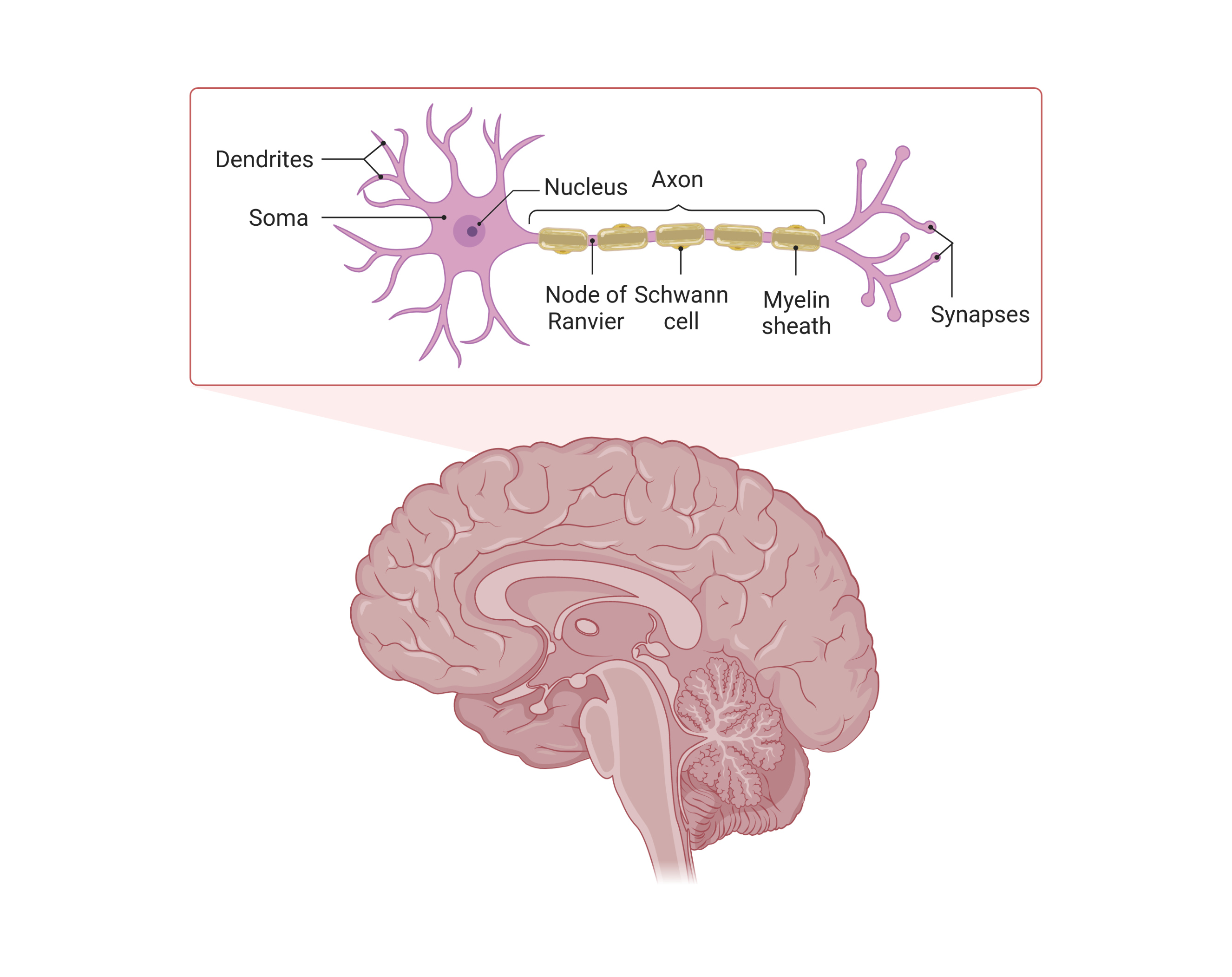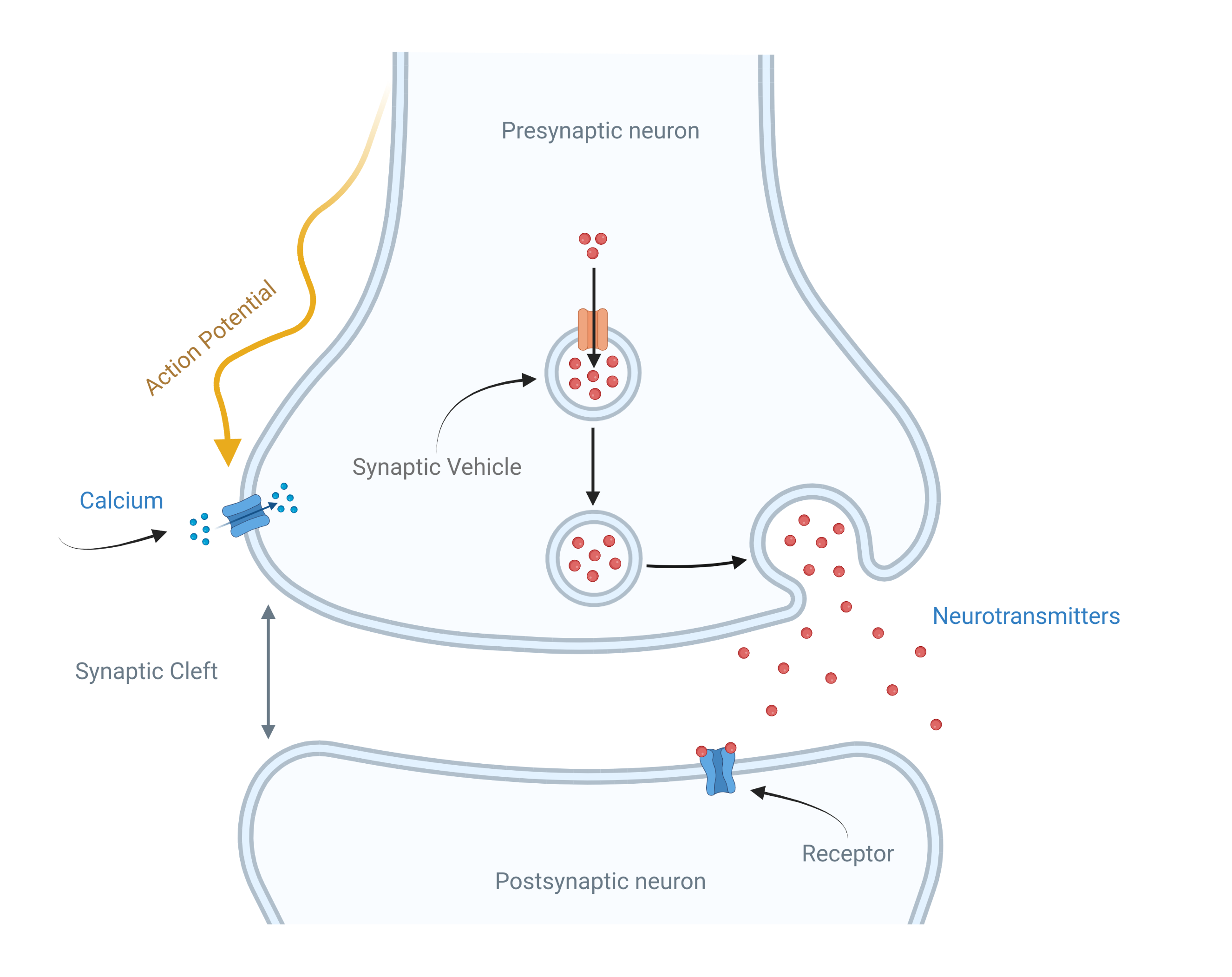Fundamental Brain Physics
Welcome to my blog! This summer, I am embarking on an exciting outreach adventure by sharing my PhD research with you. Each week, I will release a new blog post where I unpack a specific aspect of my scientific work. The best part? I will be presenting the information in bite-sized, easily understandable chunks of text! So, whether you are a fellow academic, a curious mind, or simply looking to expand your knowledge, this blog is here to serve you. Throughout the text and in each image you can find links to more detailed sources of information for the topics I discuss here. This week's blog post focusses on the fundamental physical properties of the brain and is dedicated to Ivan Andres Davidovich. Let's get started!

Neuroscience is a research field devoted to the exploration and understanding of the central nervous system: an elaborate tapestry woven from neurons that orchestrates our cognitive faculties, emotional responses, and physical movements. Neurons rely on their ability to transmit and propagate electrical pulses, known as action potentials, to relay signals from the brain all the way through the spinal cord into the rest of the body. These neurons serve as masterful conductors of electrical impulses, which are passed on from neuron to neuron by special junctions called synapses, facilitating intricate communication system. Augmenting this process, Schwann cells envelop neurons' elongated projections, known as axons, in a protective myelin sheath, amplifying the velocity of signal propagation and smalls gaps in these protective sheets, known as nodes of Ranvier, act as local repeaters which boost and regenerate the signal, ensuring that it remains strong and clear as it travels.

An action potential unfolds like a meticulously orchestrated symphony which begins with the neuron at rest, its electrical state harmoniously balanced. When a signal from another neuron arrives, like a messenger knocking at the door, ion channels embedded in the neuron's membrane open, allowing positively charged ions, such as sodium, to flow in. This influx initiates a rapid shift in voltage, known as depolarization. As a certain voltage threshold is crossed, the charge influx dramatically spikes, akin to a crescendo in a concert, until the action potential's zenith is reached. Post-peak, the neuron promptly repolarizes, restoring equilibrium, but not without a subtle overshoot that leads to a brief refractory period, during which the neuron cannot generate a new action potential. This precise interplay of opening and closing of ion channels, guarantees swift and precise transmission of brain signals, ensuring the harmonious flow of information within our central nervous system.

As an incoming action potential reaches the end of a neuron, it sets off a mesmerizing chain reaction. The action potential's voltage change opens up ion channels that increase the local calcium concentration. This then triggers the release of neurotransmitter molecules into the synaptic cleft, a tight gap between two neighboring neurons. These neurotransmitters act as little keys racing to finding their corresponding locks - known as receptors - clustered on the receiving neuron's membrane. This connection between transmitter and receiver, in turn, leads to the opening of ion channels connected to the receptors, allowing charged particles to surge in, generating a new electrical impulse in the receiving neuron in response to the original message. The form and properties of this response are specific to the neuron in question and are used to process, propagate, and integrate electrical signals across the brain.
The content of this blog post reflects my personal opinions and insights and should not be attributed to my employer or investors. The information provided in this post is for educational purposes only and should not be construed as medical advice. It is crucial to consult with medical professionals for any mental or physical healthcare concerns. All images featured in this blog post were created using Biorender.com under an academic license. These blog posts are derived from excerpts of my PhD thesis, based on research conducted at the University of Oslo, which you can also read on this website.
